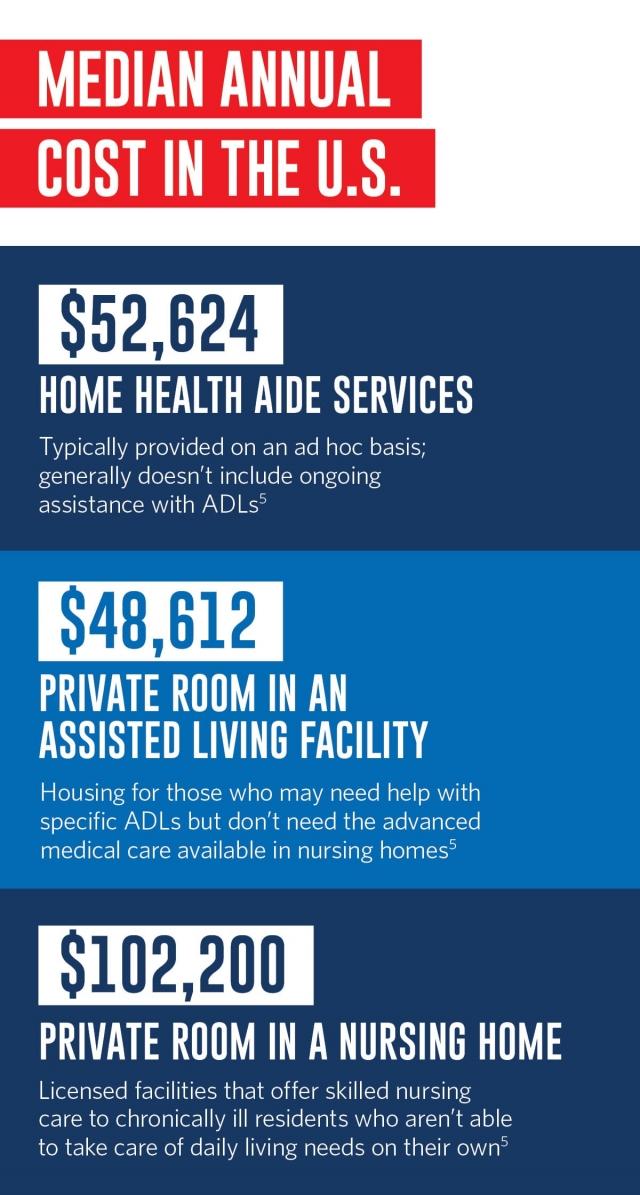Why It Matters:
- According to the U.S. Department of Health and Human Services, about 70% of people turning 65 will have a long term care need during their lifetimes.1
- An estimated 53 million Americans have provided care to an adult or child with special needs at some time in the past year.2
- Working adult caregivers in the U.S. have substantially lower financial well-being than do their counterparts who are not caregivers.3
With 10,000 Baby Boomers turning 65 every day, and a rise in the incidence of chronic conditions, retirees and their families will likely face increasing demands when it comes to evaluating housing options, managing finances and health, understanding legal issues, and creating contingency plans for unanticipated events.4 Making informed decisions can take time as clients learn the options available to them.
Navigating the Journey
Retirees could hire a Geriatric Care Manager (GCM) to help navigate the complex caregiver journey. But at $250 or more for the initial assessment, and $150-200 per hour after that,4 many may find this option to be financially out of reach. Especially since the cost is entirely out of pocket because Medicare, Medicaid, and most private insurance plans don’t cover it.
PACE (Programs for All-Inclusive Care for the Elderly) is a less costly alternative offered by Medicare and Medicaid, and it may be partially or fully covered for some individuals.
Whether your clients seek help from agencies or choose to handle it themselves, there are several factors you should both be aware of as they explore the possibilities.
Long Term Care
The modern landscape of long term care planning is much different than it used to be, with many options available to meet individual needs. Providers generally fall into one of two categories: informal or formal care.
Informal care typically consists of family or friends who provide assistance with basic everyday tasks like eating, bathing, and dressing (also known as activities of daily living, or ADLs). Formal care involves a facility or provider being compensated for a specific level of care. As the level of assistance needed becomes greater than informal caregivers can provide, individuals will usually transition to a more formal care provider.
The Financial Costs of Care
Finding ways to fund future healthcare costs is one of the most important parts of retirement planning. Many individuals cover expenses with the help of insurance, some pay out of pocket, and others may be eligible for government assistance. While it’s tough to say exactly how much retirees will need, it’s helpful to consider the median costs for three common types of care.
The Other Costs of Caregiving
While family and friends undoubtedly want to help their loved ones, they may not be fully aware of caregiving’s inherent costs beyond finances. For example, in most cases, caregivers are sacrificing their own family and work responsibilities. Ultimately, the financial and emotional toll can be overwhelming, with researchers finding that caregivers are more likely to have weaker immune systems, and struggle with headaches, depression and anxiety-related problems.5
Quality of Life
While caregiving has its challenges, it can also be fulfilling, and there are several ways caregivers can get the help they need. Technology-based caregiver support, education, and skills training can be an effective and efficient way to enhance caregiver knowledge and skills. Taking pleasure breaks, increasing self-care, doctor assessments, support groups, and respite programs can also improve caregiver and patient quality of life.6
Other questions to consider regarding the retiree’s quality of life include:
- Is the individual safe with his or her current level of care? For example, a certain level of independence can be maintained with the addition of a service that provides alerts for emergency medical help.
- Are there opportunities for the retiree to have regular social interaction? Isolation can lead to overall decline.
- Can the individual take care of his or her basic needs? Determine what level of care is needed ― light housework, medication management, meal preparation, basic ADLs ― to begin the search for an appropriate provider.
Every situation is unique, and every choice is an individual one. The key is for clients to be open to a range of possibilities and for them to maintain an ongoing dialogue with family, friends, and caregivers. Encourage your clients to speak up and make their personal preferences known.
As a level of care is determined, work with clients to determine how best to fund their healthcare needs. Be proactive with clients who are still preparing for retirement, and help them plan ahead for potential caregiving needs. By creating a financial strategy that includes Wealth + HealthSM, you can help them be ready for whatever comes their way.
Things to Consider:
- Encourage clients to be actively involved in any transition decisions.
- Provide clients with a wide range of resources to help ensure they’re getting the care they need.
- Work closely with your clients to be sure future healthcare costs are part of their overall financial strategy.
1 “What Is Long Term Care and Who Needs It?” The Federal Long Term Care Insurance Program, accessed online January 2019
2 "Caregiving in the United States," AARP/National Alliance for Caregiving, May 2020
3 “Poor Financial Well-Being for Working Caregivers,” Gallup, September 2018
4 "Geriatric Care Managers: A Resource for a Growing Population of Family Caregivers," MIT AgeLab, October 2018
5 "Cost of Care Survey," Genworth Financial, Inc., 2019
6 "The High Costs of Caring for a Loved One," Where You Live Matters, November 2019
7 "Caregiver Care," American Family Physician, June 2019
Neither Transamerica nor its agents or representatives may provide tax or legal advice. Anyone to whom this material is promoted, marketed, or recommended should consult with and rely on their own independent tax and legal professionals regarding their particular situation and the concepts presented herein.
Transamerica Resources, Inc. is an Aegon company and is affiliated with various companies which include, but are not limited to, insurance companies and broker-dealers. Transamerica Resources, Inc. does not offer insurance products or securities. The information provided is for educational purposes only and should not be construed as insurance, securities, ERISA, tax, investment, legal, medical or financial advice or guidance. Please consult your personal independent professionals for answers to your specific questions.




